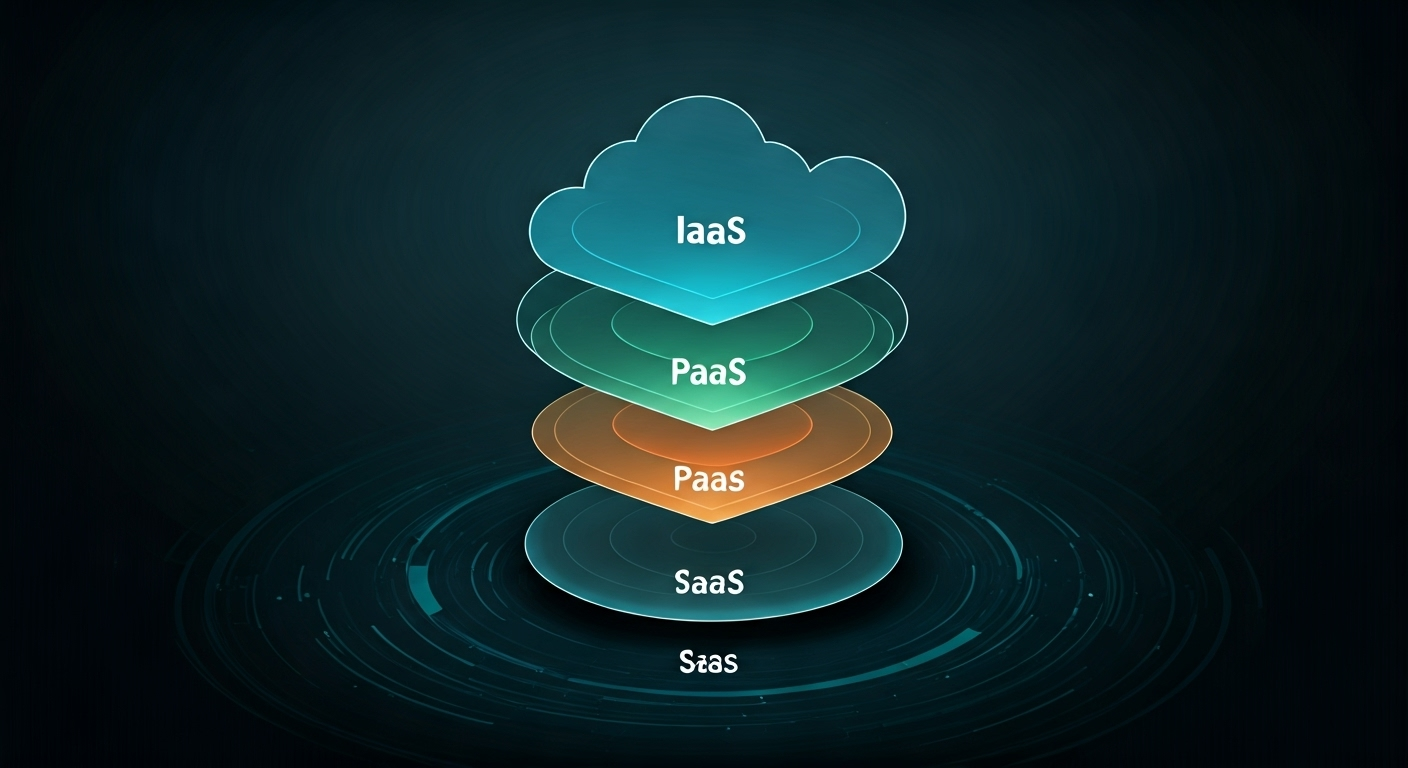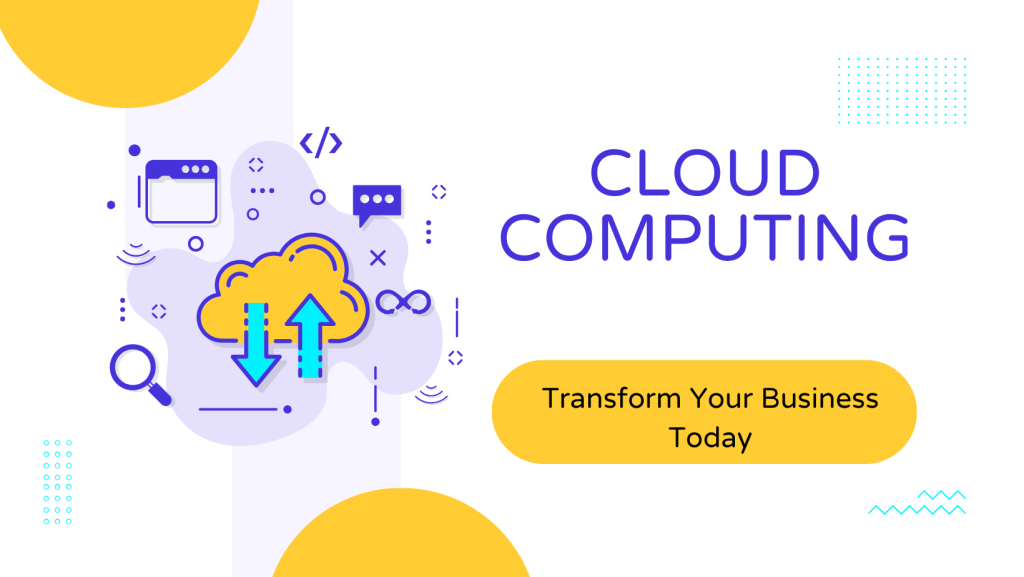Introduction
Cloud computing is changing the way people and businesses work. The shift in IT infrastructure is making it easier to use cloud platforms and help your business grow as much as you need. With cloud computing, you use remote servers, so you can have quick and easy access to computing power, data storage, and software resources on the internet. This means your team can use what they need, when they need it. It is very helpful for things like rolling out apps, boosting the speed of your team, or working with big data analytics. You can see that cloud technology has become such an important part of every company. Now, we will look a bit deeper into how it works, what the main benefits are, and the different service models you get with it. This helps your business be ready for whatever comes next.
Understanding Cloud Computing

Cloud computing makes it easy for people and companies to use powerful IT resources, like computing power and data storage. You do not need to set up or look after physical equipment. By using cloud platforms, you get more flexibility. It takes away many of the problems you find with old-style systems.
The way cloud computing works is simple. It connects you to remote servers over the Internet. You can use virtual machines and get easy access to different applications. Data centers become main spots for IT resources and let us work better and faster. With cloud computing, there are new use cases for lots of people and companies. It helps everyone find new ways to grow.
Defining Cloud Computing in Simple Terms
Cloud computing is when you use computer resources, such as cloud services or storage, that are kept on remote servers through the internet. You do not have to own your own physical hardware. The cloud lets you use computing power from large data centers.
You can think of the cloud platform as an invisible network you get to through your internet connection. It lets you use things like hosting servers and software applications. You do not have to worry about fixing or managing the needed equipment. Many people like this way because it is flexible and helps save money.
Cloud computing makes it easy to use cloud applications, manage important business information, and set up deployment models for software resources. With remote servers, you can depend on your service staying on and working. That is why so many people count on the cloud for better work, especially in data-driven jobs.
The Evolution of Cloud Computing
Cloud technologies started to grow in the 1960s. Dr. Joseph Carl Robnett Licklider first talked about a big idea called the Intergalactic Computer Network. He wanted everyone to be able to connect and work together with computers. But this was just a start. It was not until 2002 that Amazon Web Services changed things by bringing out cloud computing that people could buy. They began by offering storage services.
In 2006, things moved forward again for cloud architecture and IT infrastructure. Amazon made it easy for people to deploy technology with their service called EC2. Companies like Google and Microsoft followed. They brought new tools that people at work could use every day, such as Google Workspace and Microsoft Office. Because of these new use cases, more people wanted to try the cloud and build their own system on it.
Today, experts say most big companies could use hybrid cloud models before 2028. This is because new cloud architecture and IT infrastructure systems are strong. They help businesses do more by bringing better ways to set up and run their important tools for all of us.
Key Characteristics of Cloud Computing

Cloud computing gives people the power to scale up or down their IT resources when there is a change in demand. This way of working also means you can be flexible as your needs grow or shrink. With on-demand self-service, you have the choice to set up what you want without needing someone else to step in. So, you get more control over your work.
Another key part is resource pooling. Here, providers use and share their physical servers to get the most out of them for different jobs. This setup makes the work more efficient. With broad network access, these cloud applications can be used from almost any place that has an internet connection. This supports people who need to work together, even if they are not in the same space, and gives everyone a better way to use the cloud.
On-Demand Self-Service
On-demand self-service changes the way businesses use IT resources. It lets people get the computing power they need without asking someone for help. The cloud platform makes this easy by giving users quick access to many services and tools. Teams can now set up the resources they need right away. This way, they work faster and respond better to changing needs. Being able to control and grow these services on their own means teams do not have to wait for the IT group as much. This helps every department try out new things and move forward with ideas more quickly.
Broad Network Access
Having access to cloud computing resources is important for businesses today. It lets them use services and applications from almost anywhere. The wide network access uses standard protocols and the internet. This means users can work with cloud platforms easily. Employees can use cloud services, like data storage and different analytics tools, on their phones or computers. They do not have to stay in one place. This kind of flexibility helps people work together better and get more done. It also supports the different ways organizations need to work in a world that is getting more and more connected.
Resource Pooling and Virtualization
Resource pooling and virtualization are key parts of how cloud computing works. The use of these tools helps companies handle IT resources in a better way. When physical servers and storage come together as one big shared pool, businesses can change how much they use at different times. This helps them keep up with demand as it goes up or down. Doing this can also lower the cost, as there is less waste from keeping physical servers and storage that do not get used much.
Virtualization goes a step further. It allows many virtual machines to run on one physical server. This boosts performance and makes it simpler to manage other IT resources. With the mix of resource pooling and virtualization, companies can get more flexible. They also work better, look after their sensitive data, and keep systems strong. A business with these tools can move fast and stay safe.
Cloud Computing Service Models

Several different cloud service models meet many needs for a business. Infrastructure as a Service (IaaS) gives you scalable IT resources. With IaaS, you get things like compute capacity and storage, so you do not need to buy or set up physical hardware.
Platform as a Service (PaaS) is a complete place to work on app development. With PaaS, developers can build and test their apps, and they do not have to take care of the underlying infrastructure.
Software as a Service (SaaS) helps people use the software they need over the internet. SaaS is simple to use, and it works well for many use cases for both people and companies.
Infrastructure as a Service (IaaS) Explained
IaaS, also known as Infrastructure as a Service, changes the way people work with their IT resources. This is done by using virtualization technology. With IaaS, users can get scalable computing power and storage. They do not have to own or keep physical hardware. Companies like Amazon Web Services and Microsoft Azure give flexible pricing. This means that groups only have to pay for what they use. This pay-as-you-go setup helps to lower costs, make disaster recovery better, and makes data management easy. As your needs change, IaaS lets you adjust your resources with ease. This helps to spark new ideas and supports many kinds of application development.
Platform as a Service (PaaS) Overview
Platform as a Service (PaaS) is a cloud computing model that makes application development much easier. The platform is fully managed, so developers do not have to worry about the underlying infrastructure. You get scalable resources, helpful development tools, and support for many programming languages. This lets people build and deploy cloud applications fast. PaaS is good for teamwork because it helps everyone, even if they are not in the same place, work together and manage projects well.
With the use of big data analytics and data analytics, organizations are able to get insights and improve the way their cloud applications work. This helps companies grow and become more efficient.
Software as a Service (SaaS) Benefits
Flexibility is a key part of the Software as a Service (SaaS) model. This makes it easy for companies to change their IT resources when there is more or less demand. SaaS is a type of cloud computing service that helps save a lot of money. It does this by removing the need for big hardware and cutting the costs for maintenance.
With SaaS, teams from places all over can work better together. This happens because everyone gets to use the same software from any location. Software is always up to date, and users can get new features fast with little or no downtime. Using SaaS lets businesses pay attention to what they do best. They do not have to spend time on software management, because that work is done by the service provider.
The Rise of Serverless Computing
A big change has come to cloud computing with serverless computing. This new way lets developers worry less about the underlying infrastructure. They can now focus on their code. Companies can use scalable resources from a cloud service. This helps them grow and shrink their apps as needed and answer user demand at any time.
Serverless architecture also helps with new technologies like artificial intelligence and machine learning. This makes it easier to handle data and do application development. Businesses can now use fewer IT resources and lower their operating costs. Because of this, many organizations now move to serverless computing. They want to grow faster and become more competitive in their fields.
Types of Cloud Deployment Models

To get the most out of your IT resources, you need to know the different deployment models in cloud service. Public clouds are great if you want to scale up fast and save money. You can use shared resources, so you do not have to keep your own physical servers. Private clouds help you when you need extra security and a setup just for you. They work well for businesses that deal with sensitive data. Hybrid clouds give you the best of the two. You get to move your workloads around when needed. This means you get more control, and you can follow data safety rules at the same time. If you want even more protection and better speed, a multi-cloud way lets you use more than one cloud service provider. That way, your setup is safer, and your work keeps running well.
Public Cloud: Features and Use Cases
A public cloud gives you a lot of helpful options that can support many different IT needs. With scalable resources found in large data centers, your business can use flexible compute capacity. You do not have to deal with physical servers on your own. Some common use cases for public cloud services are hosting web applications and running big data analytics. Many organizations use the public cloud for both application development and disaster recovery plans. This way, they protect their data and lower the chances of data loss. When you choose platforms like Amazon Web Services or Microsoft Azure, you get the benefits of cloud computing. These tools also help you keep strong cloud security.
Private Cloud: Security and Customization
A private cloud stands out because of the strong security and the flexibility it gives you to change IT resources for your own business needs. With a private cloud, organizations have more control over their sensitive data and can meet all compliance rules. This means they can plan their cloud architecture to match even the strictest rules. The choices don’t stop there. You can also change your physical resources to fit what you need. This works well for disaster recovery or if your team wants a special space for application development. When you use cloud infrastructure that is set aside just for your business, you get to improve how your company works. At the same time, you keep your data safe with strong security steps. This low risk can be hard to match in public cloud services, so it gives businesses even more reasons to choose a private cloud over a public cloud.
Hybrid Cloud: Flexibility for Businesses
A hybrid cloud model gives businesses more flexibility by smoothly bringing together public and private cloud environments. With this setup, organizations can quickly adjust their IT resources to match changing needs. This helps them get the most value from cloud storage and computing power. They can keep sensitive data safe in a private cloud and still run less important applications in the public cloud. By using the underlying infrastructure from both clouds, businesses improve data storage and manage costs better. The hybrid cloud also supports new ideas and boosts disaster recovery plans. Because of this, companies can stay quick and keep up with changes in the market.
Multi-Cloud Strategies
Using more than one cloud provider helps a company make its IT infrastructure better and stronger. A multi-cloud plan lets you spread your work across platforms like Amazon Web Services, Microsoft Azure, and Google Cloud. This makes your setup more reliable and helps avoid getting stuck with just one provider. When you use different cloud services, you can pick the pricing that works best, keep sensitive data safe, and take advantage of special cloud applications and tools each platform offers. This way, you use your resources well, grow or change quickly, and stay flexible. It also helps companies to be more creative and keep up with what the market needs right now.
Business Benefits of Moving to the Cloud

Switching to cloud services brings many good things to a company. It helps make the work smoother for teams. When a business uses scalable resources, it can use its IT infrastructure in a better way. This helps cut costs by not needing as many physical data centers or people to manage them.
Cloud platforms also make it easy for everyone to get what they need and work together, no matter where they are. Using data analytics, businesses can make sense of big data and make better decisions. Cloud security is strong, so sensitive data can be safe. This will help with being up to date with rules and lower some risks.
Cloud computing also helps people in a business come up with new ideas and react quickly to changes. This gives them a better chance to grow and do well in the fast-moving world today.
Cost Savings and Operational Efficiency
Using cloud computing services can help your business save money and work better. When you use a cloud platform, you do not need to spend as much on big IT infrastructure things, like setting up your own physical data centers or buying a lot of servers. Because of this, you lower your capital costs.
The cloud also lets you change your computing power as you need it, so you use only what you need when you need it. This way, you make the best use of your resources. Being able to scale this way makes work simple, helps teams get more done, and lets people focus on new ideas instead of always dealing with the underlying infrastructure.
Enhanced Collaboration and Accessibility
Cloud computing helps teams and departments work together more easily. It uses new technology so people can get to what they need from anywhere if they have an internet connection. When the tools and cloud applications are on the cloud, everyone in the team can share data and work on projects at the same time. It does not matter where they are.
This makes work faster and helps people do more, as everyone can work together in real time with the help of cloud applications. By letting people use important IT resources and apps from wherever they are, companies can make a good place for all to work and be ready for anything new that comes up.
Scalability and Agility for Growth
Cloud computing gives businesses great scalability and flexibility. It lets them change how they work as things shift. By using pay-as-you-go resources, companies can quickly adjust their IT infrastructure. This means they only pay for what they use. This is good when their needs grow fast or slow down because of seasonal changes. Cloud platforms also help people deploy new apps fast, so companies can react to the market in less time. This adaptability helps people stay innovative and get new things out to customers faster. By using more computing power and streamlining the way things are done, organizations can grow well and keep up with others in a tough market.
Addressing Cloud Security and Compliance
Making sure that cloud security is strong and meets the rules means using best practices and smart tools to handle sensitive data. Security teams need to look for weak points in the cloud infrastructure and make sure their work fits with the rules to protect IT resources. For this reason, having a clear plan for data protection helps stop data loss and makes disaster recovery easier. In addition, using automated tools to check if you are following rules can help you spot possible problems in cloud security. This way, your cloud applications stay honest and strong against new threats and people feel good about trusting cloud computing services.
Data Protection Best Practices
Putting strong data protection steps in place is important for any group that uses cloud computing. You need to update your security rules often. It is also good to use encryption on sensitive data. This can help lower risks. Use multi-factor authentication and strong controls for access to make sure only the right people can get to what they need. When you use a cloud service, make sure to take advantage of its built-in security features. This will make your system stronger.
Having good backup and disaster recovery plans keeps your business safe from data loss. It also helps get things running after a problem. Teaching all employees to be aware of security makes your defenses better in this fast-changing digital world.
Managing Regulatory Compliance in the Cloud
Working with cloud service providers and staying compliant with laws is not always easy. Every company has the responsibility to know what rules and standards apply to their line of work. It is important to use the tools cloud service platforms give you. This means putting cloud security best practices in place, like using data encryption and making sure to control who gets access. Taking care of sensitive data should come first.
Your team will need to always watch over and check the cloud infrastructure. This helps to make sure you stay on the right side of the law. It also means you can find and respond to any security concerns right away. Using good tools for both cloud security and data management makes it easier to keep track of what is happening in your systems. By following these steps, your company will have a stronger digital system that keeps data safe and follows all the best practices.
Tools for Cloud Security Management
Making sure that cloud security is strong needs different tools. These tools help to keep sensitive data safe and lower the risk of security concerns. Identity and access management is one key part. It helps control who can get into cloud applications and data. Also, data encryption tools add another layer of safety for data when it is not moving and when it is sent from one place to another. This stops people who do not have permission from seeing the data. Security information and event management (SIEM) tools are also used to watch for problems in real-time. These tools help people find and fix threats fast in the cloud environment.
Overcoming Challenges in Cloud Adoption
Moving to a cloud environment comes with some big challenges. Many people find it hard to move their old it infrastructure to the cloud. They also need to use good data management to keep everything safe and running well. Another thing to look out for is staying away from vendor lock-in. To do this, you should pick your cloud service provider very carefully and use more than one, if possible. This can help you keep control over your sensitive data.
It’s important to make sure that the apps you have in your office work well with your cloud applications. By doing this, you get the most benefits of cloud computing. This will also help you switch over to new cloud technologies more smoothly.
Migration Complexities and Solutions
Moving to the cloud can show many problems that need smart ideas to solve. Some common problems are issues with moving data, making sure your old IT infrastructure works with the cloud, and needing good cloud management tools. It helps to make a clear plan for moving and let teams talk with each other in a smooth way. Doing this can bring down the chances of data loss or downtime when you shift to the cloud.
You can make things easier by breaking up the move into parts, picking a cloud service provider that knows the job well, and bringing in automation tools. Getting security teams involved early in the plan is important. This makes sure that your sensitive data stays safe during the whole process.
Preventing Vendor Lock-In
Vendor lock-in can be a big problem in cloud computing. To lower these risks, it is good to use open-source tools. This helps your business to switch between cloud service providers with ease. Using more than one cloud service at a time can also help. It lets you spread your work across different platforms instead of putting it all in one place.
If you use standard APIs, your developers can make sure your apps work with different cloud services. You should check your cloud service contracts often and make sure you can move your data if needed. This way, you keep better control of your IT resources. It also helps you keep costs down and stay in charge of how you run things.
Conclusion
The change the cloud has brought to the way businesses work is clear. Cloud computing helps people in a company do their jobs better and faster. By using scalable resources and new tech, organizations can make their IT infrastructure stronger. This brings more flexibility and allows teams to try new things. With this system, people can save a lot of money. They also get better disaster recovery and people can work together in a smoother way. As things in the digital world change, so must the ways we do business. Moving to the cloud is not just helpful. Now, it is needed if people want to grow and keep up with others in the future.
Contents
Frequently Asked Questions
Most frequent questions and answers
The main types of cloud computing services are:
Infrastructure as a Service (IaaS). This gives you access to virtual computers and storage in the cloud. You can use these to run and store the things you want, just like using your own hardware, but online.
Platform as a Service (PaaS). This lets people build and develop apps by using tools and platforms on the internet. Developers do not have to worry about managing hardware or basic software.
Software as a Service (SaaS). This provides software programs over the internet. You and other people can use the software right away without having to download or install it.
These cloud computing services make it easy for people and businesses to get what they need online.
Data security in the cloud is strong. It uses things like encryption, access controls, and checks done often. But, businesses should also follow best practices for keeping data safe. They need to stay updated on rules they must follow. This can lower risks and help make their security better.
Before a business moves to the cloud, it should look at its IT infrastructure. The company needs to check for compliance and security at this stage. It is also important to think about how much it could cost. You want your staff to be ready for the change, too. Picking the right service model and vendor is also a big step. This will have a big impact on how well things work, not just now but for a long time.
Yes, for sure! Small businesses can use cloud computing to lower costs. You can also work better with your team and use the top tools without spending a lot. The cloud can grow with your business and helps you change fast when you need to. This way, you can keep up and stay strong in the market. It is a good way to help your business do well over time.
Cloud computing helps a business be more creative and try new things. It lets people work faster and build what they need without waiting long. With the cloud, companies get the latest tools and resources any time they want. This helps them change their plans or grow a project with ease. The cloud lets companies move fast when the market or their customers want something new. As a result, it helps them grow and stay ahead of others.



